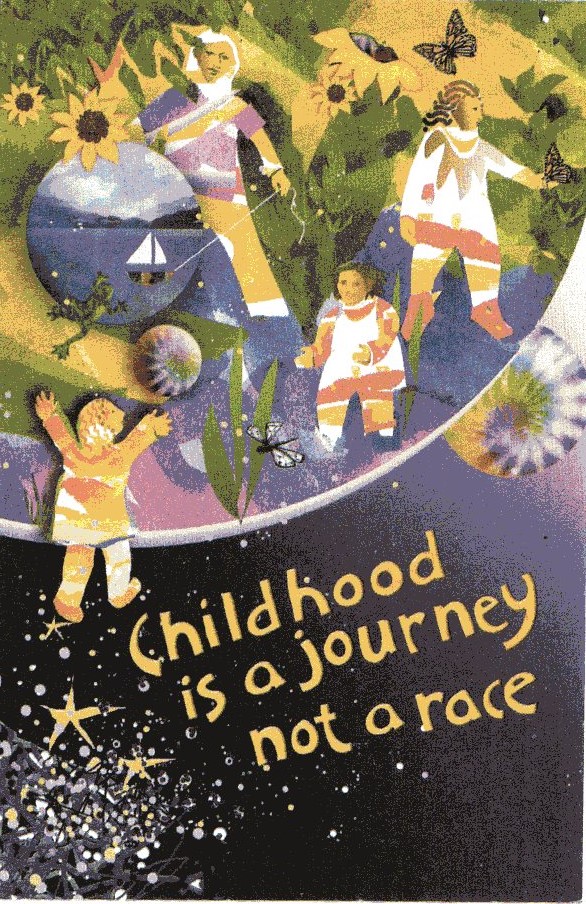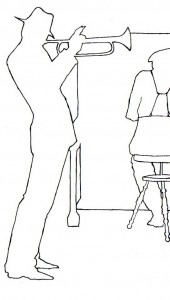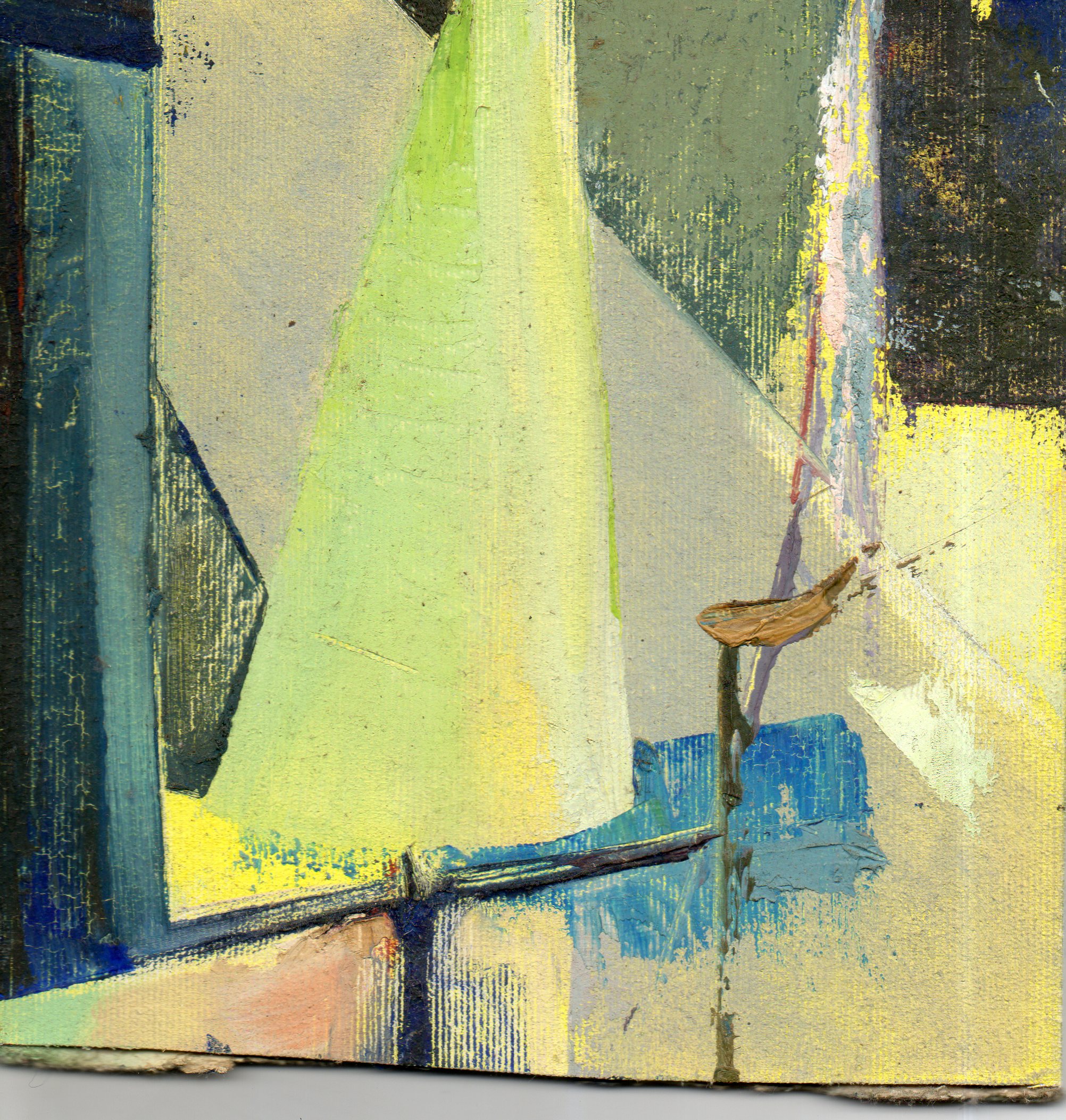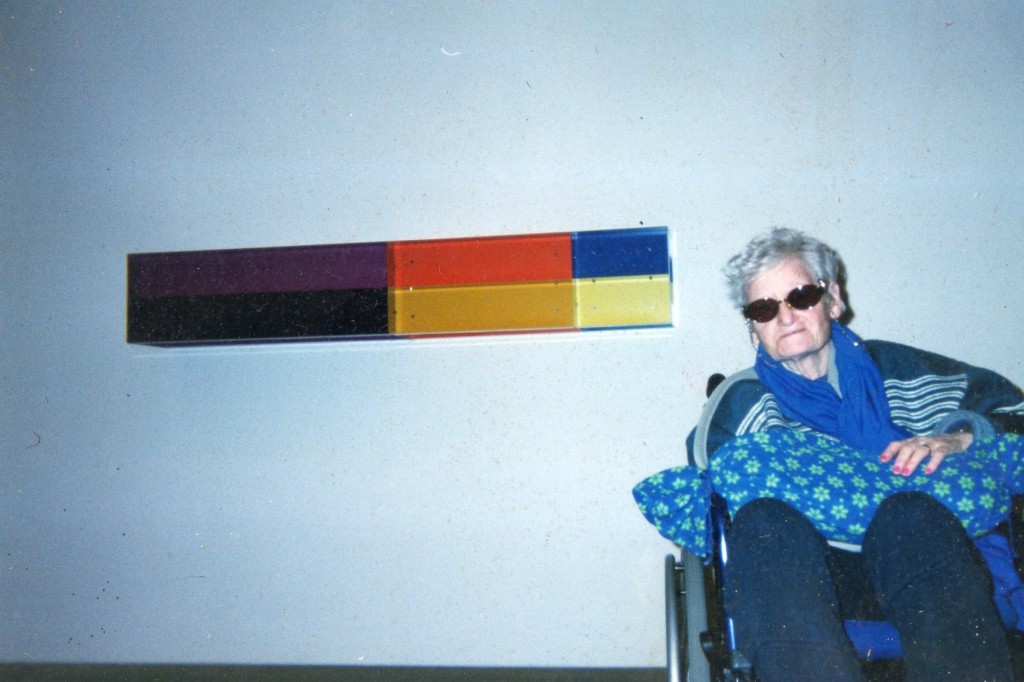Three quotations about STORIES
Jewish-American author, Isaac Bashevis Singer: “When a day passes it is no longer there. What remains of it? Nothing more than a story. If stories weren’t written, men would live like beasts, only for the day…”
British art critic and novelist, John Berger: “Stories are always taking things from one place to another.”
Nigerian author, Ben Okri: “Without fighting, stories have won over more people than all the great wars put together.”
OF COURSE
A few weeks ago, I performed in a ‘storytelling marathon’ in São Paulo. A Brazilian storyteller called Dani Barros told this story. She heard it while travelling in Burkina Faso and Mali…
There was once a path which led through a forest. At the end of this path was a village, and the village was famous for a particular reason. People said that whoever went there was changed in some way.
It was a long way to the village. The path wound through the forest for many miles. And about halfway along it, there was a house where a widow lived with her son. This was good news for travellers on their way to the village. Many of them would break their journey at the widow’s house, and sleep there for a night.
That’s exactly what happened one day. A stranger came walking along the path and, when he reached the house, the widow went out to greet him. “It’s a long way to the village,” she said. “Perhaps you’d like to spend a night with me and my son.”
The stranger accepted. The next day, he carried on his journey.
Several weeks went by. Then the traveller came back. “How did you like the village?” asked the widow.
“I was disappointed,” the man said to her. “I thought it was going to be special in some way. But it’s just a village in the middle of a forest. The people have very little. Nothing interesting seems to happen. So I decided to leave the place.”
“Of course,” said the widow, and the traveller went on his way.
Only a few days later, another stranger came walking along the path, and the same thing happened. When he reached the house, the widow went out to greet him. “It’s a long way to the village,” she said. “Perhaps you’d like to spend a night here.”
The stranger accepted. He spent a night with the widow and her son. Then, the next day, he continued his journey.
Several weeks later, the stranger came back. “How did you like the village?” asked the widow.
“It was the most beautiful place I have ever seen,” he told her. “I couldn’t believe how colourful the flowers are and how tall the trees grow. Children run around freely, and the older ones look after the younger ones. Every night the villagers gather together to dance and tell stories. I felt so happy there, I’ve decided to go and fetch what I own, and go back to live there!”
“Of course,” said the widow, and the traveller went on his way.
When he’d gone the widow’s son said to her. “I don’t understand. One traveller came back and he told you he didn’t like the village, and you said, ‘Of course.’ Then the next traveller came back and told you he loved everything about the place, and you said exactly the same thing!”
His mother replied, “Well, that’s because everyone sees the world according to what they have in their heart.”
And the boy said, “Of course.”
Writing secrets – FLYING CROOKED
I’ve been working on a second novel for teenagers. It’s a tough piece of writing (for reasons that will become apparent if ever I get to the end of it and it becomes a book.)
Recently there have been some days when I’ve flown along, covering lots of pages. But there have been plenty of other days when I expected to fly along, covering lots of pages, and actually found myself spending long hours on a single paragraph, or getting nowhere at all.
There’s an Oscar Wilde story I like. He said he spent an entire morning working on a poem, and all he did was put in one comma. Then he worked on the poem all through the afternoon, and all he did was take the comma out.
Oscar Wilde liked to exaggerate, for comic effect. But I find this story of his completely believable! Writing gets like that.
Some years ago, the difficulty…the stops and starts…and the getting-nowhere in spite of all the trying might have left me feeling dejected…perhaps pessimistic about what I was doing…probably frustrated with myself.
But I’ve been writing books for long enough now, to know that the bad days are intimately connected with the good days. You can’t afford to puff yourself up when it’s going well, or deflate when it’s going badly.
I’ve talked about this with my friend, the painter, Ed Gray. He’s described going through exactly the same good times and bad times when working on paintings in his studio. And he has a good little saying to deal with it: “The important thing is to show up.”
Sometimes I can ask myself if I’ve “shown up” for my work in recent days, and the answer is, “No.”
If I look back on recent weeks, the answer is “Yes.” And when that’s the case, I find myself feeling quite optimistic about the slowness, and the detours and difficulties along the way.
This poem, by British writer Robert Graves, has become a favourite:
FLYING CROOKED
The butterfly, a cabbage-white,
(His honest idiocy of flight)
Will never now, it is too late,
Master the art of flying straight,
He has–who knows so well as I?–
A just sense of how not to fly:
He lurches here and here by guess
And God and hope and hopelessness.
Even the aerobatic swift
Has not his flying-crooked gift.
Robert Graves (1895-1985)
TO END THE YEAR…
A thought from the British author, Philip Pullman: “Thou shalt not is soon forgotten, but Once upon a time lasts forever.”
Nasruddin and the traveller…
One day Nasruddin saw a man walking along the road. He had a heavy bag and was looking gloomy.
Nasruddin called out to the traveller, “What’s making you so miserable?”
“I’m on a trip to seek happiness,” the man told him. “And I’ve travelled far and wide, but I’ve not been able to find out how happiness is produced.”
Without another word, Nasruddin grabbed the traveller’s bag and he ran away with it. Off he went down the road, as fast as a rabbit. Then, round a bend, Nasruddin darted out of sight into some undergrowth.
The traveller, who did not know the area so well, just carried along up the road. And he looked even more unhappy, now that his bag had been stolen.
Nasruddin took a shortcut and reached the road a good bit further along. Then he put down the bag and waited.
Presently the traveller appeared. He saw his bag. He ran towards it. And, when he realised it hadn’t been stolen after all, he picked it up and shouted with joy.
“There you are,” said Nasruddin. “That’s one way of producing happiness.”
SMILE, YOU’RE BEING EDUCATED!
A school in São Paulo, Brazil, where I live at the moment, recently caused a stir by installing security cameras in all of its classrooms.
The students at Rio Branco (a well-known, private secondary school) were not told about this. They arrived one morning and found the CCTV cameras staring down from the ceilings. It provoked a student walk-out which led to the suspension of 107 pupils. And this has started a debate between people who think security cameras in school classrooms are a good idea and people who don’t.
The argument in favour tends to be that classroom cameras improve behaviour and offer security to students and teachers. “The walls of the classrooms are cleaner, and the teenagers are much better behaved,” says Débora Goulart, Head Teacher of another Brazilian school with classroom cameras. And the mother of a pupil asks, “What goes on in lessons that people don’t want recorded? If you’re doing nothing wrong you have nothing to fear!”
Disruptive behaviour in classrooms is a problem. And there are cases where CCTV camera footage has cleared up difficult disputes. (In Britain, where I’m from, there was a case of a boy who claimed to have been dragged from a classroom by his teacher. He used marks on his arms as evidence. But CCTV footage showed he was lying. It proved there was no contact between the teacher and the boy, and showed that he asked a friend to punch his arms to make the marks.) All the same, I have some questions for those in a hurry to put these cameras into classrooms.
Firstly, how much difference do they really make? Isn’t it a bit naïve to think that pupils who have behavioural problems are going to leave them behind just because they are being filmed? How good is good behaviour if it is just in response to a camera on a wall? And won’t bullies and others who behave badly in schools just find ways to carry on, out of sight from the cameras?
Secondly, aren’t those who are in favour of the cameras so fixed on the bad things they may prevent that they’re forgetting the good things that they may be preventing as well?
If a school puts cameras into classrooms it seems like an admission that there is something profoundly wrong with the relationships between its teachers and its pupils. Either some teachers are not managing to engage pupils effectively, or some students seriously lack faith in their teachers. (Or both.)
Are classroom cameras going to do anything to improve these relationships? And shouldn’t the school be looking to do that before anything else? After all, it is those relationships between teachers and pupils that are the very life-source of learning in schools.
If something is profoundly wrong then it demands a profound course of action. But that’s not what putting in security cameras is. It’s too easy. It’s too much like papering over the cracks.
The whole story of the cameras at Rio Branco (including the way they were installed without a word to pupils) suggests that the school is sidestepping more time-consuming and demanding ways of facing its difficulties: through human exchange, honest conversation, listening, reflection, dialogue, negotiated deals. Instead it has opted for a technological quick-fix.
What do you think? Please comment if you have thoughts on the subject. Cameras in classrooms are by no means limited to Brazil. They are increasingly used in countries around the world.
And what comes next? Computer chips sewn into uniforms to monitor where pupils are?
Well, actually, the day before yesterday I read an article in the Brazilian press, reporting that a school near to the capital, Brasília, is doing exactly that. Pupils have to wear uniforms with chips sewn in which track where they are. And other schools are already expressing an interest in the idea…
Three sayings from Afghanistan
‘Two watermelons cannot be held in one hand.’
‘What is the trumpet player’s job? To blow.’
‘They asked the fox, “Who is your witness?” He replied, “My tail.”’
(Image from a picture book – one of my favourites – called BEN’S TRUMPET, written and illustrated by Rachel Isadora, published by Greenwillow Books back in 1979 and still in print. You can hear it read here.)
I’LL SEND MY EYES…
A few years ago, I led a creative writing course at HM Prison Rochester, in the south of England.
A group of twelve or fourteen prisoners, aged 18 to 21, took part. We worked for a couple of hours every morning, round a big table at the back of the prison chapel. The project led to the publication of a book of poems by the prisoners. They put on a performance to other inmates. And I remember the courage, humour and honesty of the men who stood up to read their poems cutting right through the restlessness of some in the audience who had come along thinking their poetry might be a bit of a joke.
So by the end, it felt like quite a successful project. And I remember the very beginning being important.
I wanted to find a way for everyone taking part to introduce themselves, while knowing that young men in prison might not want to say anything too personal. So I suggested a sort of game.
I said we were going to send a rocket into space, and asked the prisoners to think of one thing each, to put on the rocket to represent themselves.
I started. I told them I’d put a leaf from the oak tree behind the house where I grew up. And the man next to me got the idea straight off. He said, “I’ll send my eyes…because when you’re in prison they’re the most precious thing you’ve got.”
After that, hardly anyone hesitated before choosing something to put on the rocket.
“I’m going to send the spikes off my running shoes because when I was sixteen I was the best sprinter in my school.”
“I’ll put a photograph of my son.”
“I play music and I’ve recorded stuff. So I’ll send a CD of my songs.”
The game worked. Everyone used it to say something with some truth in it.
Then it came to the last prisoner in the circle – quite a pale man, a bit smaller than the others. And he said, “My name is Sten, from Estonia. I am five months in this country and five months in prison. What I will put in this rocket is MYSELF. Then it will be a good way to get out of this prison!”
Nine writers talking about poetry
Stephen Spender: “Great poetry is always written by somebody straining to go beyond what he can do.”
Benjamin Zephaniah: “I would say that the poet’s role was to question things in an accessible way and to raise people’s spirits.”
Les Murray: “My poetry is like a rope in a shipwreck.”
Rubem Alves: “Poetry: this desperate attempt to say what cannot be said.”
Martín Prechtel: “Poetry is the most honey-tasting form of subversion.”
Robert Frost: “It begins in delight, it inclines to the impulse, it assumes direction with the first line laid down, it runs a course of lucky events, and ends in a clarification of life – not necessarily a great clarification, such as sects and cults are founded on, but in a momentary stay against confusion.”
Pablo Neruda: “Poetry…has a cat’s nine lives. They harass it, they drag it through the streets, they spit on it and make it the butt of their jokes, they try to strangle it, drive it into exile, throw it into prison, pump lead into it, and it survives every attempt with a clear face and a smile as bright as grains of rice.”
Adrian Mitchell: “I write my poems for love – love of language, love of my family, friends and animals, love of the planet, love of life, and I’d be a damned fool if I didn’t.”
Dylan Thomas: “Poetry is what…makes my toenails twinkle…”
Writing secrets – PLAYFULNESS
You want readers to enjoy what you write, so it probably helps if you enjoy doing the writing.
If you look at children playing, they seem very absorbed in what they’re doing, but it’s light rather than serious, and they’re having fun.
I like to start writing in that spirit.
If I manage to get going in a playful way – absorbed but free to try this and that, not taking it so seriously, and having fun – it’s often the beginning of a good day’s work.
Sometimes I write well at the weekend, when things are more relaxed all around and there’s less expectation to get something done.
It’s something described better than I’ll manage by the Nigerian writer Ben Okri in a book of essays published back in 1997 called A WAY OF BEING FREE. In one of the essays, called NEWTON’S CHILD, he says:
Creativity, it would appear, should be approached in the spirit of play, of foreplay, of dalliance, doodling, messing around – and then, bit by bit, you somehow get deeper into the matter. But if you go in there with a businessman’s solemnity or the fanaticism of some artistic types you are likely to be rewarded with a stiff response, a joyless dribble, strained originality, ideas that come out all strapped up and strangled by too much effort… Do not disdain the idle, strange, ordinary, nonsensical, or shocking thoughts which the mind throws up. Hold them. Look at them. Play with them. See where they lead.
INSPIRATION…Helen Taylor
My mother, Helen Taylor, is an amazing woman. She turns 80 today. There are many things I love about her, and many things I owe to her.
As a younger woman she was a music teacher. So she encouraged me to try out playing instruments and to sing and to listen to music. Until today I love doing all three (though I should admit I’m best at the third one by quite a long way!) And I’m sure that the grounding in music she encouraged me to get feeds into my writing today.
Listening to music helps me when I’m writing. I find different sorts of music boost me in different sorts of ways. And there are the things that you learn about from music too – rhythm, harmony, dissonance, silence, beginnings, endings. All these will feed into just about any kind of art work I can think of.
And as well as being a musician, my mother is a painter. As I was growing up I’d often find her wearing a paint-spattered shirt, absorbed in a painting, working long (and often quite strange) hours.
That was an introduction to the spells of untamed focus that comes with a passion for a particular art form. And, as with the music, there were specific things I learnt.
My mum taught me to mix colours. She’d tell me to fill the whole page if I did a drawing. She showed me how she plays with a picture, taking things out and painting over things in layers until they feel right. She’d tell me the best way to find out what a picture was like was to look at it upside down. Sometimes she’d turn a painting to the wall and say it was good not to look at it for a few days…so she could go back and see it with fresher eyes.
Some more directly than others, these are all things I find myself doing these days when I’m writing.
Here is the sort of work she would do. It’s a sketch for an oil painting of hers from over thirty years ago…
I know she painted that over thirty years ago because it was before she was ill.
At the age of 50 she suffered a stroke which left her paralysed down the right-hand side of her body, and took away perhaps 80% of her ability to speak.
It’s a sad thing to say every time I say it but, overnight, the illness robbed her of her ability to play music. She’s never moved her right arm since. Nor has she played a piano or a guitar.
But it didn’t stop her painting. She learned to paint with her left hand, and has come up with many new paintings with a different sort of beauty.
Here is one…
The determination and strength of character it took for her to paint pictures like that might be the most inspiring thing of all about her. I have never heard her feel sorry for herself about her disability, or even complain. She just gets on with things.
Here she is. Happy birthday, Mum!












